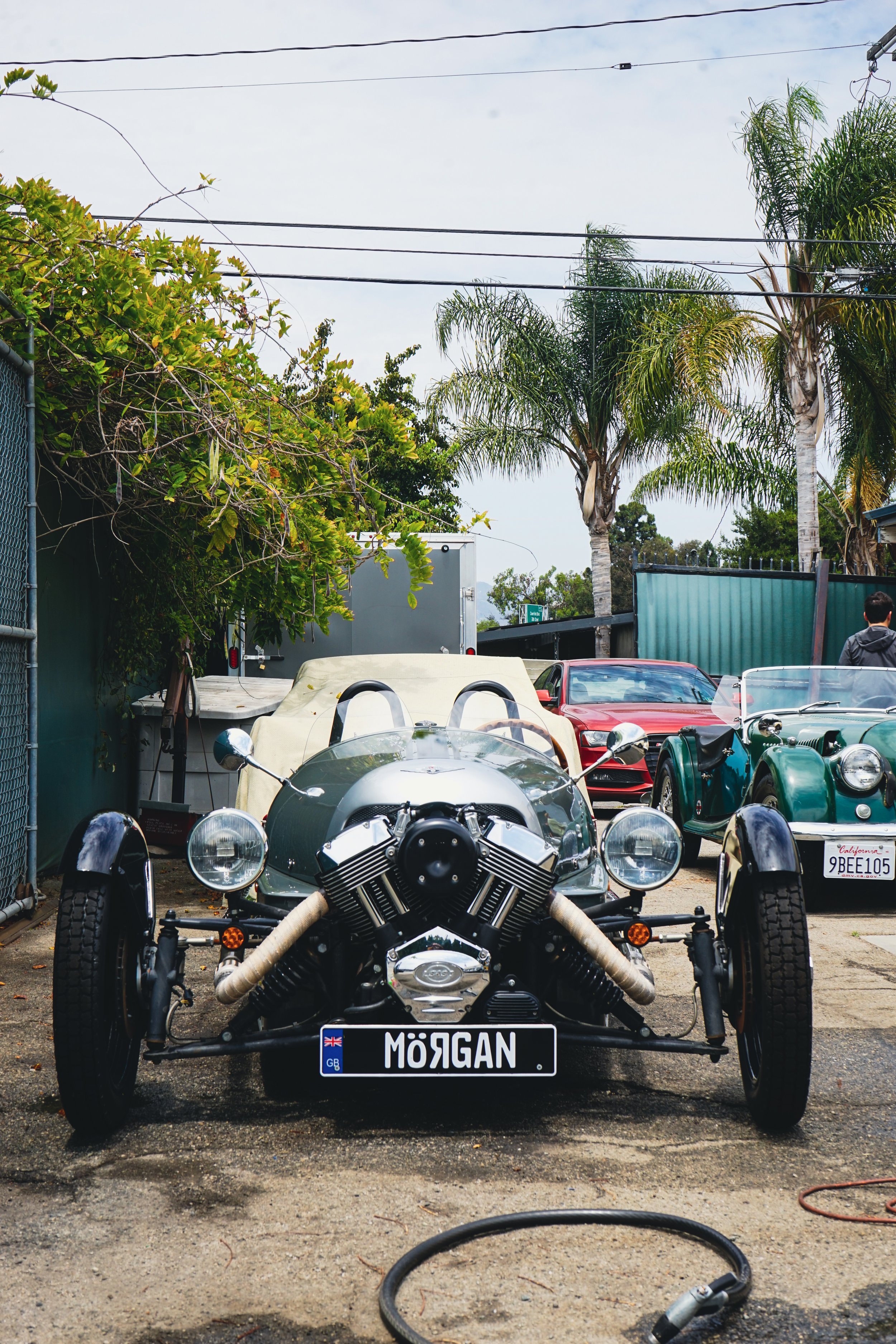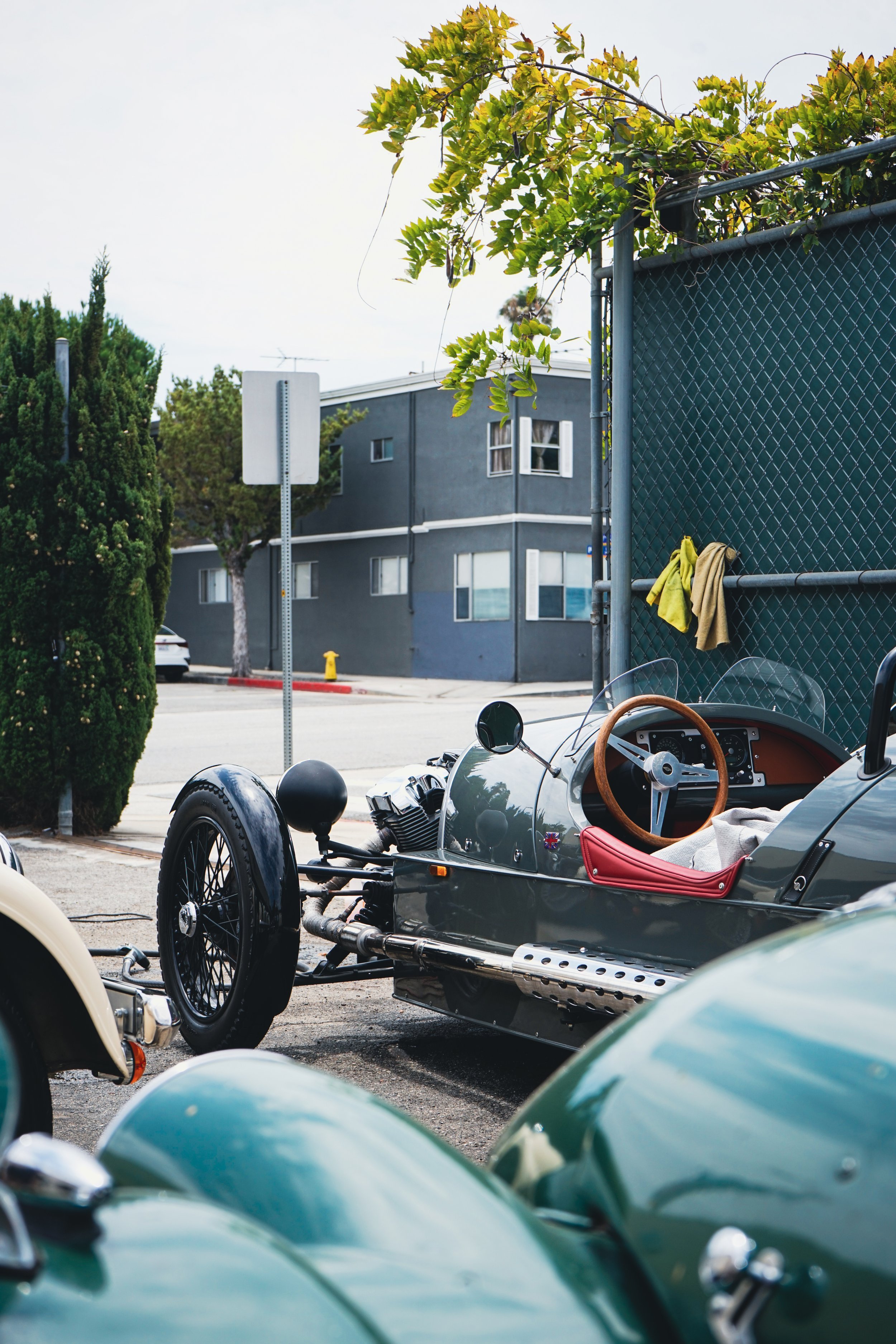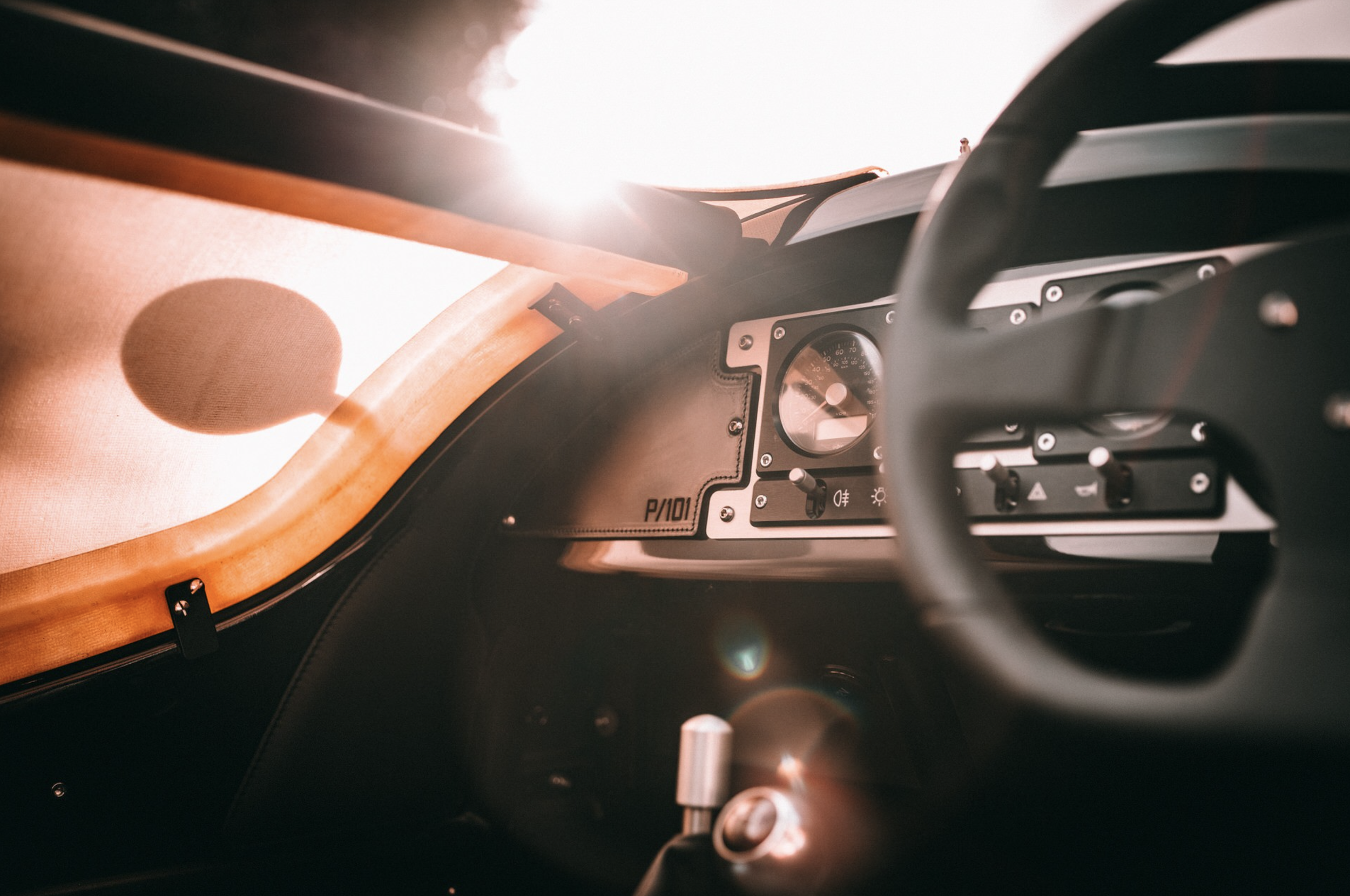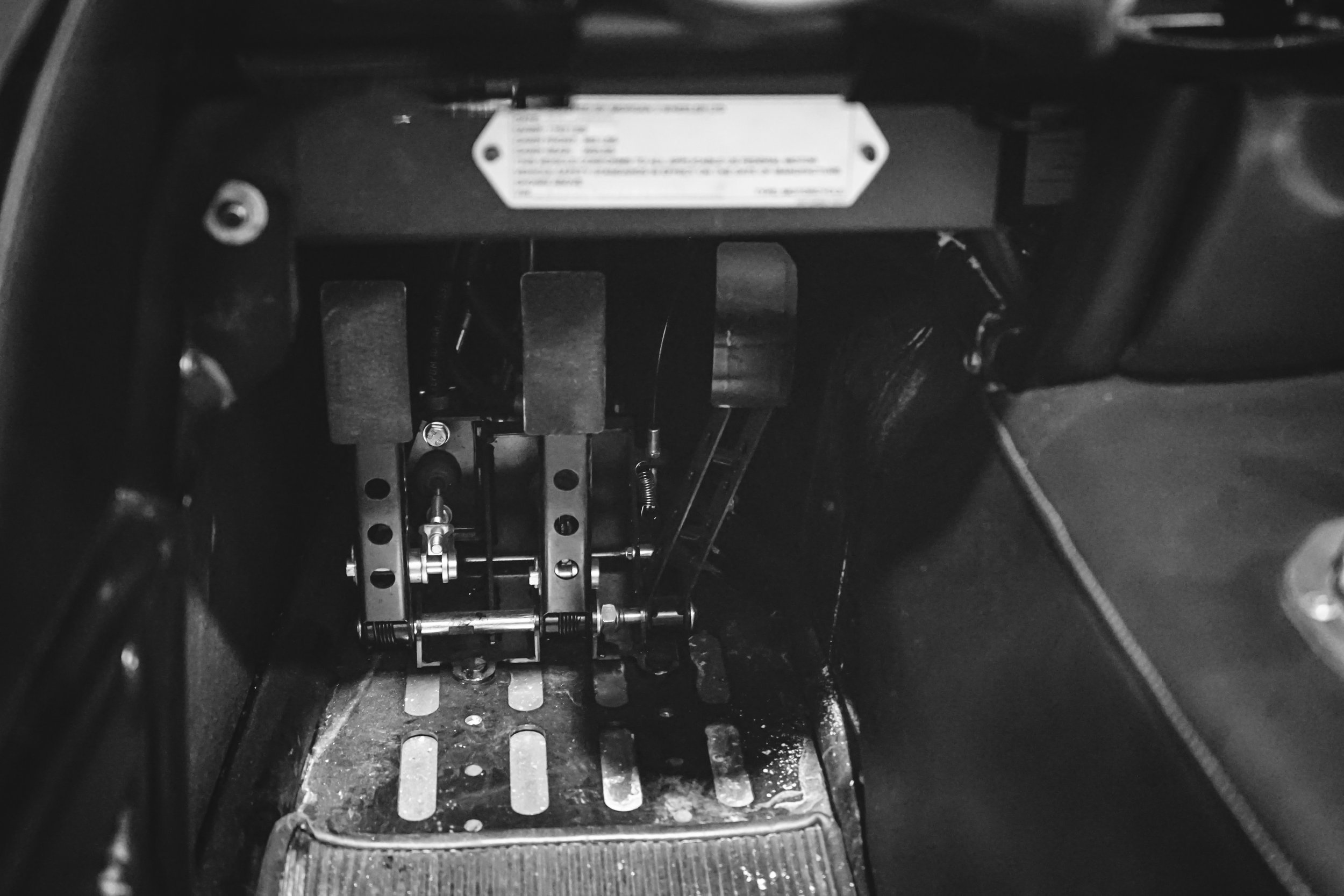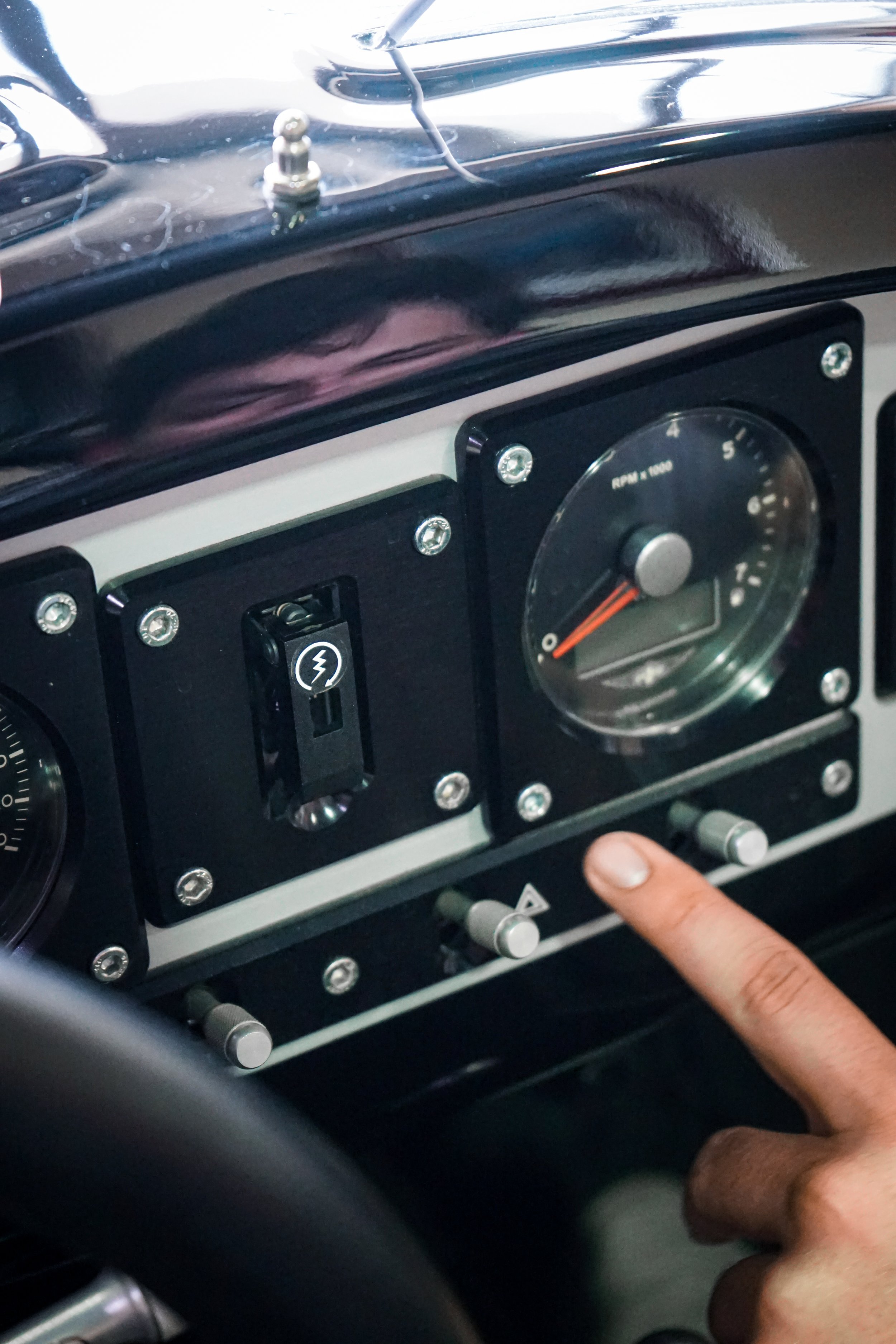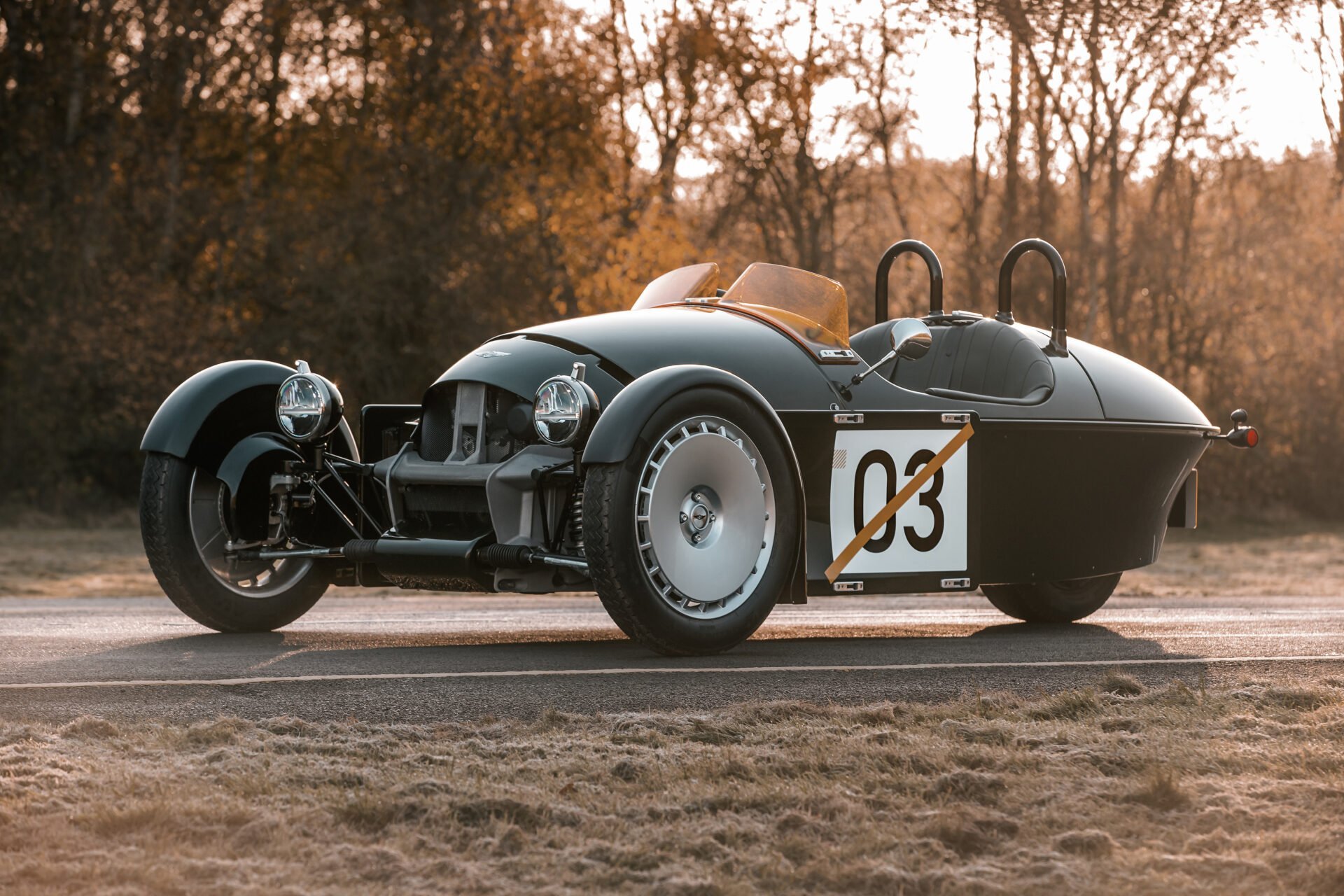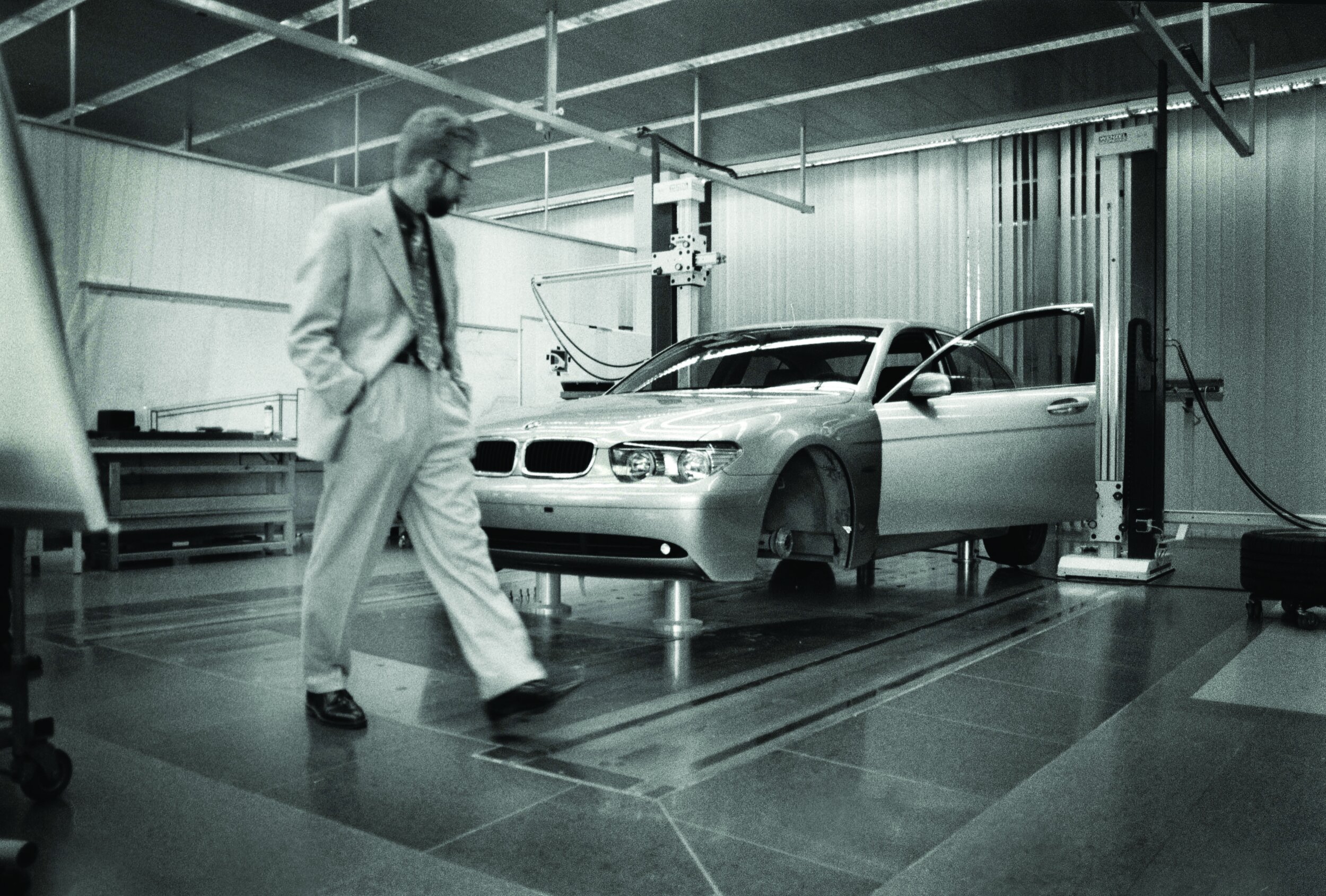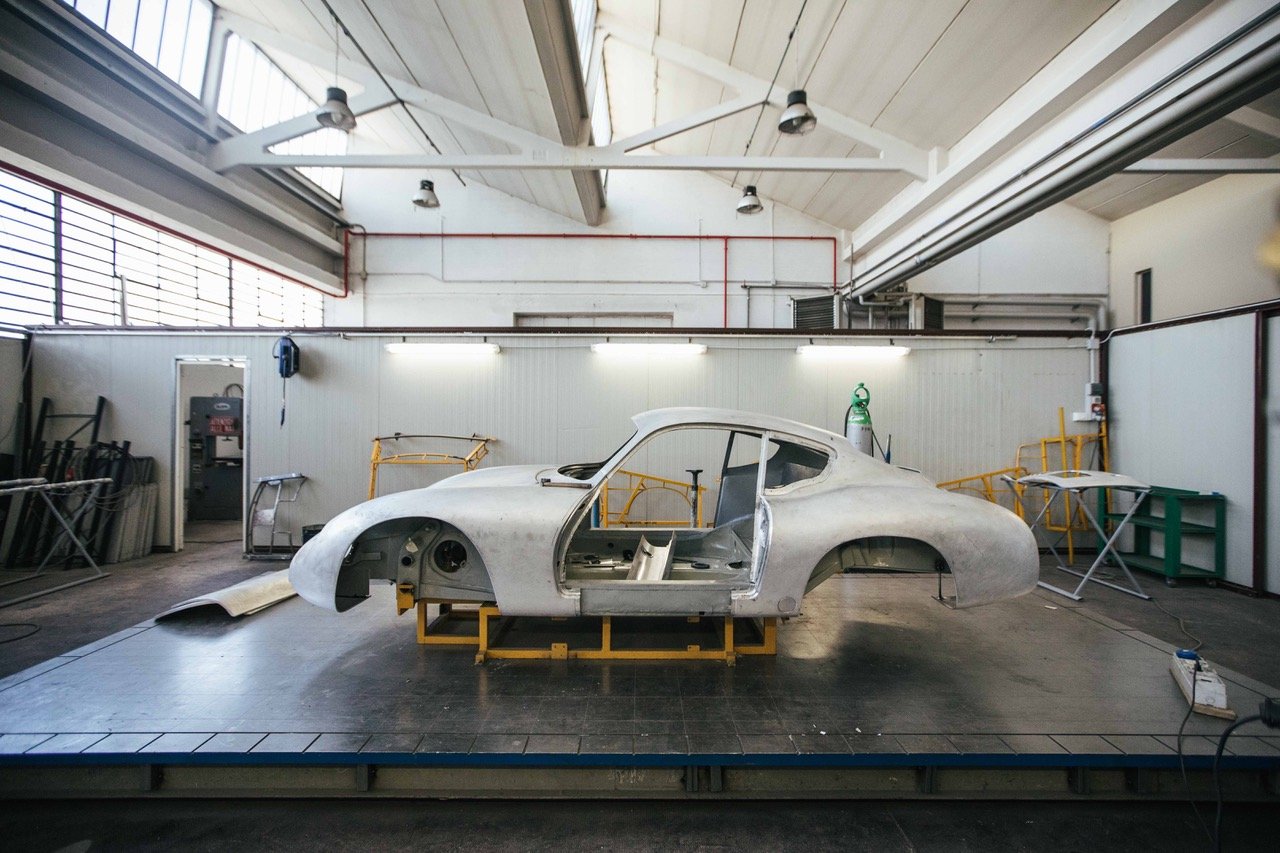2018 Morgan Three Wheeler; Sometimes The Old Ways Are Best.
There's a scene from "Gone in 60 Seconds" in which Nicholas Cage complains to his Ferrari dealer that "There are "too many self-Indulgent wieners in this city [L.A.]" Continuing,
"Now, if I was driving a 1967 275 GTB four-cam…"
Roger the Car Salesman:
"You would not be a self-indulgent wiener, sir... You'd be a connoisseur."
This line echoed across my head as I stood before the Morgan Three Wheeler. Cage was right; L.A. is filled to the brim with "self-indulgent wieners."
In his mind, a 1967 Ferrari was a ticket out of that club. Clearly, though, he had never seen a Morgan before; if he had, this would certainly have been his answer:
The car you see before you is a 2018 Morgan Three Wheeler, that's right, 2018, not 1918 - it's made partially of wood and has no interest in what you think a car should be. For these reasons, I love it. And I'm not alone; other people love it. I've been in many cars, cheap cars, fast cars, slow cars, expensive cars, vintage cars, none get the level of positive attention this thing does.
At 3 miles an hour driving through sweltering traffic, with the Three Wheeler's engine obnoxiously thumping away, everyone smiles. Guys, girls, kids, grandparents, and the drug dealer across the street all love it. The number one question everyone asks is, "what year?" Most women just ask, but guys, for some reason, feel obliged to shout out a number; rarely did I hear any newer than 1965 - it was always with some degree of glee that I shouted back, "2018!" The shocked looks on their faces were always apparent as the Morgan's single rear wheel screeched away from a light.
But the Three Wheeler is no retro throwback.
Morgans have been built in the same way, in the same place, since the very beginning. Most car companies will do a complete clean-sheet redesign of their model line at least once a decade, but not Morgan. The general rarity of many ground-up redesigns results in styling that places Morgan firmly in the mid-20th Century but with powertrains and customers that have kept up with modern times.
Most new Morgans built today come with either Ford or BMW motors, so rarely does one feel that they are lacking for horsepower. Even on paper, the outgoing Three-Wheeler I drove can match most modern cars in acceleration - and while a 0-60 time of 6.0 seconds hardly seems overly impressive, you'd be forgiven for mistaking that number for 0.6 seconds.
Most modern sports cars deliver power with such competence and efficiency that automakers often feel the need to pump sensation back into the cabin through speakers and carefully tuned exhausts. It's a sad fact, but in just about any modern sports car I've driven, the speed becomes very dull very fast, so all you're left to do is ponder which one you'll buy next.
In the Morgan though, this is hardly a problem. Put your foot down and suddenly the whole world erupts into a firestorm of noise, vibration, and acceleration. First gear, second gear, third gear, surely one must be doing at least 150 mph by now, but no… I haven't even broken the speed limit. The Three Wheeler is an attack on all the senses, add microscopic windshields, thundering exhausts, an aircraft-like driving position, and the Morgan makes for a truly hilarious driving experience.
And that's all before you remember that the car you're in has all the safety and structural properties of a road-going canoe. And while that is something of an overstatement, it's a common trope to claim that Morgan cars are made of wood. In the Three Wheeler's case, though, ash wood is used to secure hand-beat aluminum panels to a steel chassis - but don't get me wrong, this car is hardly cutting-edge.
When driving the Three Wheeler, there exist fleeting moments of clarity in which one understands the sheer absurdity of the activity they're engaging in. Morgans do not have most of the safety and technological features we've become accustomed to in modern cars. Crumple zones? Roofs? Radar Cruise Control? Airbags? Functional Windshields? Nah, the Morgan doesn't bother with any of that - but what would ordinarily send buyers fleeing gives the Three Wheeler its competitive edge.
We're so used to fake fear, fake speed, fake noise, fake danger, that it's incredibly refreshing to drive something that ignores all of that in favor of real fear and real danger. That's right, the Morgan is an honest car. Sure, there are quite a number of vehicles on the market today that can scare the absolute crap out of you, but in most, there's a feeling that the roughly 10,000 computers on board will be there to catch you.
Not so in the Morgan. The sheer unbridled danger of it all only serves to enhance the experience; this is a driver's car in the truest sense of the word. To get the most out of it, one needs the perfect blend of skill, experience, and self-delusion to push the limits. I'm not that person, which means that every time I drove the Three Wheeler, I was forever finding new boundaries to probe.
And for that, I love it.
Last of its kind.
It's important to note, I think, that Morgan exists today for seemingly no practical reason other than fun. They make products the likes of which we haven't seen for decades, things you can't get anywhere else, a sound business model if you ask me. But crucially, Morgans are incredibly magnetic products and possess the most important of qualities - soul.
They do this through incredible purity of purpose, something most cars struggle with. Purity of purpose can be anything. If your goal is to make the world's fastest car, and you succeed at it, that car has an inherent honesty and is something you can bond with. The same is true for all Morgans, though perhaps slightly harder to pin down; few come away from driving a Three Wheeler without at least once exclaiming, "This is the best car in the world!"
Morgans are cars you drive just for the sheer unbelievable fun of it all, and to hell with what everyone else is doing.
That's the spirit of a Morgan, and because it is so literally handmade you get a sense of the people who made it. Whether it be the hand-sewn upholstery or perhaps the Eurofighter bomb-release switch that acts as the car's starter. At no point while driving one of these cars, does one lose a sense of the people who made it come to life and, most importantly, their values.
Jonathan Wells.
I had the great pleasure of speaking with Jonathan Wells, Morgan's head of design, only the second ever in the company's 113-year history.
Jon faces challenges, not unlike the rest of the industry. As regulations evolve, so do the cars these regulations govern. But unlike most designers whose brands revolve around modernization, Jon faces a philosophical conundrum: Suppose your company has spent the past century cultivating an image as the world's last purveyor of classic British sports cars. What happens when the British sports car as we know it becomes outlawed?
Jon's immediate response was a quote from Soichiro Honda, "In the future, there will be just half a dozen car companies…and Morgan."
I'd heard this line a few times before, but to hear it coming from Morgan's head of design made it all the more amusing.
Jon followed up, though, with a fascinating perspective, one that lends itself to what a British sports car, a Morgan, truly is.
"I think at Morgan, we always have to tread a very fine line between tradition and modern. In the U.K., we would refer to some cars as being wedding cars, whereby they look classic and traditional, but underneath, they're sitting on top of a Ford Focus. And Morgan need to avoid becoming that; we need to celebrate the best bits of our past but also embrace the future."
"It's also not until you get closer. And see the way we're still coachbuilding, meet the craftsmen at the factory still hammering aluminum into shape." "You go, Wow, this isn't an ordinary motorcar. You then start seeing some of the engineering and the technology and performance figures, and you go, Crikey. I think our biggest challenge in bringing some of those messages to the mass public was such a small marketing budget, and I think we've also got a great deal of flexibility to challenge perceptions going forward. So it's a really exciting time for the business."
A New Direction.
Morgan's latest product, the Super 3, is an all-new replacement for the Three Wheeler. It is both a product of its times and also a sign that the old ways of doing things aren't going anywhere.
In regards to the Super 3, Jon highlights that "it is quite a departure from the previous product language."
"Obviously, on the old Three Wheeler, its predecessor, the engine was doing a lot of the heavy lifting in terms of the styling. And now it is much more about the body and the aesthetic."
"For us, it was important, the Super Three wasn't a retro homage, but instead, it's sampled bits of the past and rearranged them in a way that is new." "A lot of parts of the vehicle are inspired by early fuselage manufacturing techniques where two halves of the fuselage would be bolted around the seam. The whole aesthetic of the tail takes influence from the early three-wheelers."
"There's lots of mid-century influences in some of the switch gear and the dials and some of the typography and graphics on the clocks. And what we're essentially doing is sampling the best bits of past decades and rearranging them in a way in which it looks new. So we're still looking backwards in many ways."
The Future.
Sensing perhaps, though, that not all of Morgan's customers are ready to abandon the traditional aesthetic the company is known for, Jon outlined Morgan's product strategy for the foreseeable future.
It's a strange thing, really; as our digital devices become more and more convenient, "Super three, for us, represents more than just a new Three Wheeler. 'Super,' the nameplate, the nomenclature of 'Super' actually represents a new product line for us as well."
"So whereby we have the 'Plus' product line with the Plus Four and the Plus Six. They sort of take inspiration from the early century. They're quite romantic in their styling approach. Still very honest. There still is a running board which is also a wheel arch. There still is a wooden frame that is the tool for hand-beating aluminum as well as carrying the leather. It's still very honest. But definitely take inspiration from the romance of the early century."
"'Super' is much more about technical functionality; the honesty in Super Three comes from the technical constraints influencing the design. So it gives us opportunity to introduce future vehicles carrying the super nameplate that may not have three wheels. So we could have a Plus Four, a Plus Six, maybe there's a Plus Three with three wheels. And on the flip side, we can have a Super Three and a super something else. So it's given us a new bloodline to play with as well. So the departure was intentional, in that sense."
This was exciting news, and having driven the now outgoing Three Wheeler, I am pleased to hear that Morgan has no intentions of abandoning its roots. Equally pleased, though, because if there were ever a time in automotive history when we needed the existence of such a company, it's now. This decade is one in which many automakers will find themselves in a battle to find their place. It is likely that many will not make it. To paraphrase Mr. Honda, at the end of time, there will be but four car companies… and Morgan. This creates an even greater imperative for companies such as Morgan, who have an unshaking understanding of what they do best, to continue creating the products they're known for.
I look forward to seeing what Jon and his team do next and am excited for when the latest batch of Morgan cars hit U.S. soil sometime next year, at which point we'll finally be able to take them for a spin.
Special thanks to Morgan head of design Jon Wells and Dennis Glavis, owner of Morgan West - Los Angeles
Continue Reading

